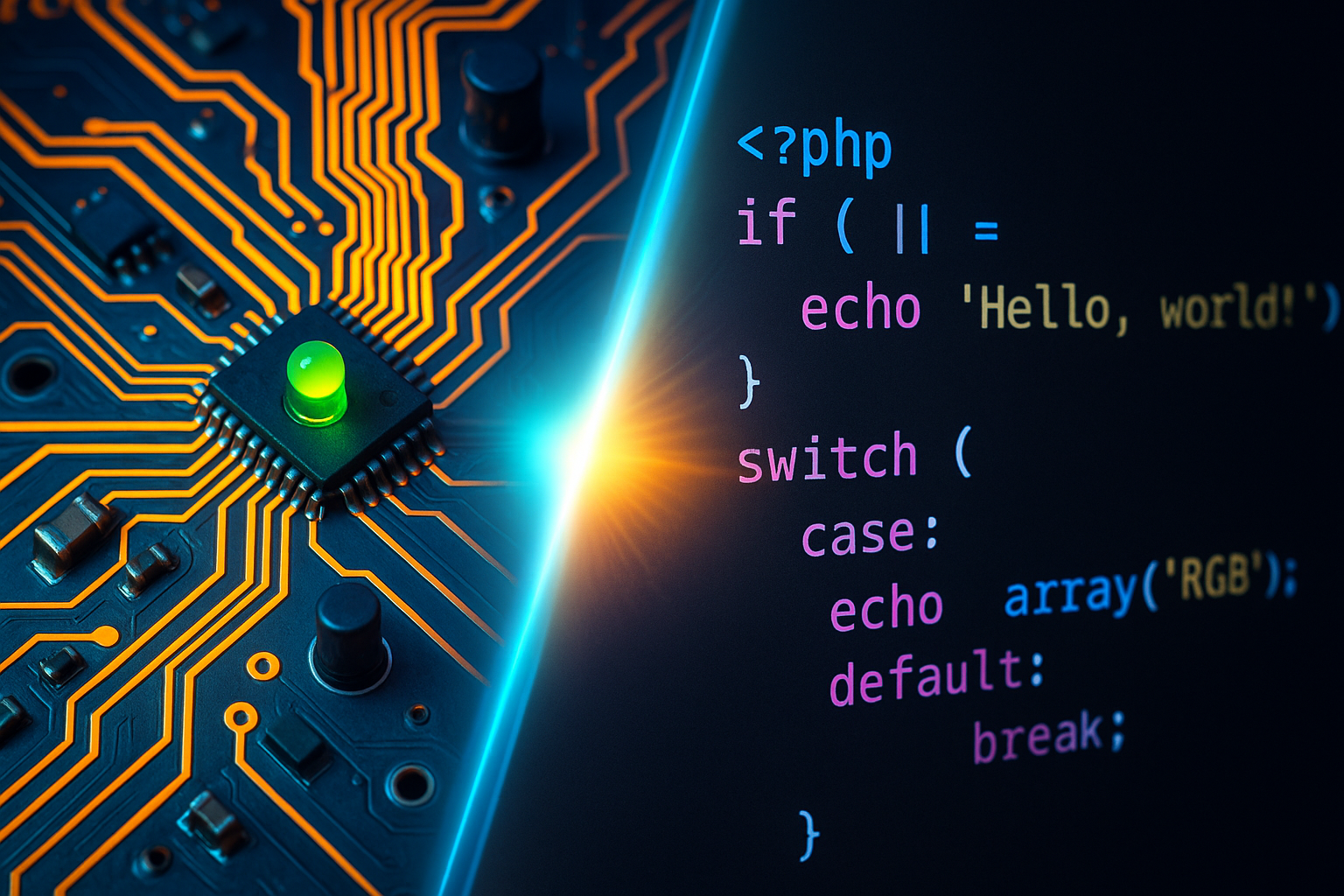Programming to Electronics: A Fun Analogy for PHP Functions
Have you ever wondered how concepts in programming mirror the physical world of electronics? Much like electrons flow through circuits, data and logic flow through your code. Mapping PHP functions and constructs to electronic components is a playful yet insightful way to deepen your understanding of how data travels, transforms, and behaves in your applications.Core Analogies
| Electronic Component | Behavior in Electronics | PHP Equivalent | Why This Makes Sense |
|---|---|---|---|
| Diode | Allows current to flow one way; blocks reverse current. | filter_var(), htmlspecialchars(), mysqli_real_escape_string() |
These functions validate or sanitize input, preventing malicious data from reversing through your app. |
| Resistor | Restricts current to a safe level. | sleep(), usleep(), custom throttling loops |
Slows down execution or limits resource use, just like a resistor limits current flow. |
| Capacitor | Stores charge and releases it on demand. | Output buffering (ob_start() / ob_get_clean()), caching (apcu_store() / apcu_fetch()), $_SESSION |
Holds data temporarily until you’re ready to process or release it. |
| Transistor | Acts as a switch or amplifier. | Control structures (if / switch, ternary ?:, match), dynamic dispatch (call_user_func()) |
A small input signal (condition/callback) governs larger blocks of execution. |
| Switch | Opens or closes circuit paths. | switch statement, ternary operator ?:, match |
Choose between multiple branches of logic based on a value. |
| Fuse | Protects circuits by blowing under overload. | try / catch, set_error_handler(), die() / exit() |
Stops execution or handles exceptions to prevent cascading failures. |
| Transformer | Converts voltage levels between circuits. | serialize() / unserialize(), json_encode() / json_decode() |
Translates data formats so different parts of your system can interoperate. |
| Inductor | Opposes sudden changes in current; smooths spikes. | Session/file locks (flock()), rate-limiting, mutexes |
Prevents abrupt state changes by enforcing locks or delays. |
| LED | Emits light when current passes through. | echo, print |
Direct, one-way output of information (a “light” in your console or browser). |
| RGB LED | Combines three diodes to produce color mixes. | print_r(), var_dump(), json_encode() |
Outputs complex, multi-part data structures in a rich, detailed way. |
Bonus Mappings
- Voltage Regulator →
set_time_limit(),ini_set(): Controls execution time and script settings, analogous to maintaining stable voltage levels. - Relay →
register_shutdown_function(), event/listener libraries: Electromechanical switches triggered by coils; in PHP, these are callbacks that fire on shutdown or events. - Oscillator →
while (true)loops withusleep(): Generates a periodic “heartbeat” or polling mechanism in code.
Practical Takeaways
- Teaching & Learning: Use these analogies when explaining PHP to beginners—bridging the gap between physical intuition and abstract code.
- Troubleshooting: Thinking of sanitizers as diodes or error handlers as fuses can help you quickly identify where data might be “leaking” or where exceptions should be handled.
- Design Patterns: Recognize familiar patterns (buffers, switches, transformers) in your applications and consider how electronics engineers optimize performance, safety, and reliability.
Analogies are never perfect, but they’re powerful tools to spark insight. Next time you wire up a circuit or refactor a PHP script, see if these parallels light up new ideas in your mind! Happy coding (and circuit building)!





